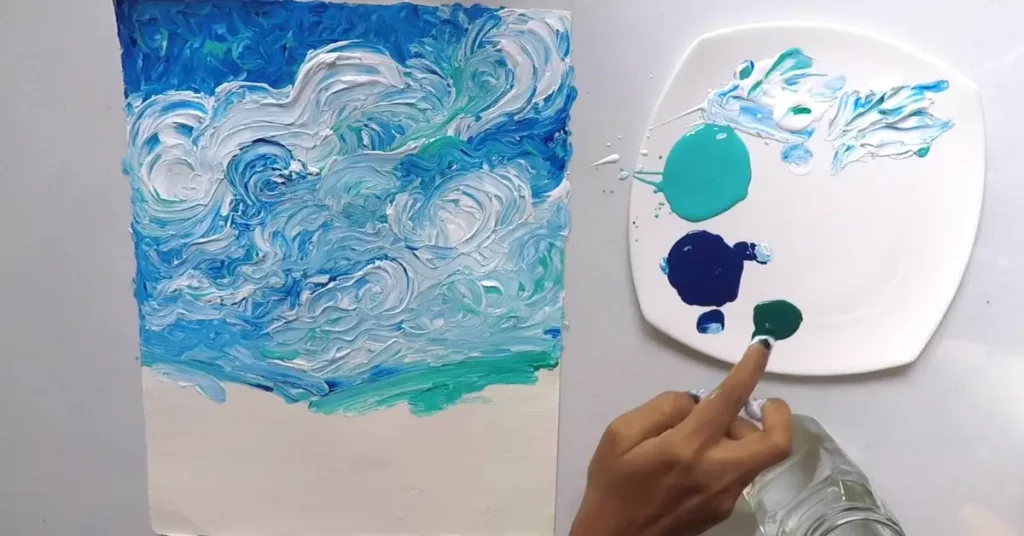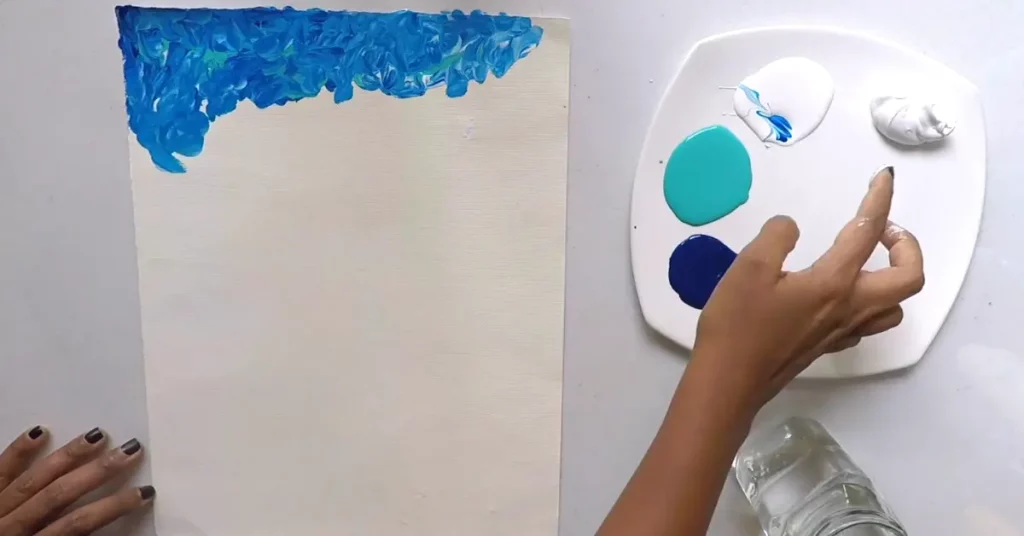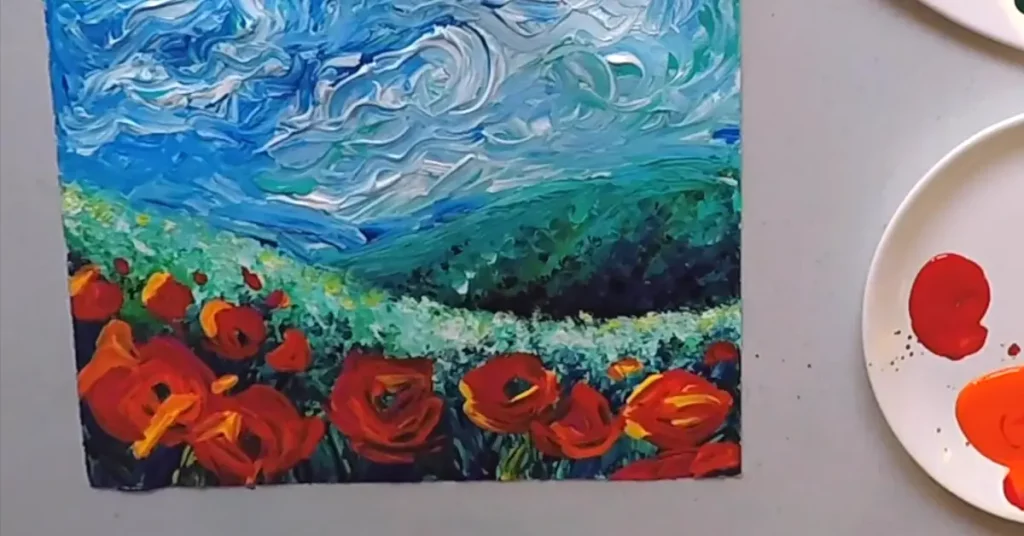Finger painting is a fun and creative activity that has been enjoyed by children and adults alike since the early 20th century. It’s an enjoyable way to pass the time while creating unique art pieces. Usually, finger painting is done using poster or tempera paint, but can you use acrylic paint for finger painting?

In this article, we will discuss this very question in detail so that you can make an informed decision about how to progress with your finger painting. So, Let’s get started.
Is Acrylic Paint Safe for Finger Painting?
The short answer is yes, it is perfectly safe to use acrylic paint for finger painting. Acrylic paints are water-soluble and, therefore, non-toxic when dry, meaning they pose no health risks when used in the form of finger painting.

Finger painting is an amazing way to express yourself creatively, and if you want to recreate something similar nowadays acrylic paint is perfect for the job. You can use this classic painting technique on canvas or any other surface to bring your masterpiece to life.
But, it is essential to note that acrylic paints contain certain chemicals, so it’s best to keep them out of reach of young children who may be tempted to taste them. It is especially important to watch out for Cadmium colors since they contain lead. You can also use tempera paint as finger paint.
Pros of Using Acrylic Paint for Finger Painting

1. Vibrant Colors
One of the biggest advantages of using acrylic paint for finger painting is that it produces vibrant colors. This is because acrylic paint is made with pigments that are more concentrated than those found in other types of paint, such as watercolor or oil paint. This means that you can achieve bright, bold colors with acrylic paint that you may not be able to achieve with other types of paint.
2. Quick Drying Time
Finger painting with acrylic paint also has the added benefit of having a quick drying time. This means that you won’t have to wait long for your painting to dry, and you can move on to the next project quickly. Additionally, this can be helpful if you make a mistake while painting, as you can simply paint over it once the acrylic paint has dried.
3. Easy to Clean Up
It is also easy to clean up acrylic paint after finger painting. This is because acrylic paint is water-based, so it can be easily removed from surfaces with soap and water. Also, it may help you if you have young children who are finger painting, as it will be easier to clean up any messes they make.
4. Durable:
Acrylic paint is also durable, making it ideal for finger painting. This means that your paintings will last longer and won’t fade over time like some other types of paints can.
Also, you can use them if you want to frame your paintings or hang them up in a place where they will be exposed to sunlight, as they won’t fade as quickly as other types of paintings would.
5. Non-toxic:
Another advantage of using acrylic paint for finger painting is that it is non-toxic. This means that it is safe to use, even for young children who may put their fingers in their mouths after painting. Also, this can be beneficial if you are concerned about the health effects of using toxic paints, as acrylic paints are not known to cause any health problems.
Tips & Techniques For Using Acrylic Paint For Finger Painting
If you decide that using acoustic paint for your next finger painting session is right for you, then here are some tips you should consider before getting started.
1. Decide On the Colors You Want to Use:
Acrylic paint comes in a wide variety of colors, so you can mix and match it to create the perfect palette for your painting. You’ll want to choose a paint that has a thick consistency so that it doesn’t run or drip too much.
You can also buy pre-mixed finger paint, which can be a great option if you’re not sure what colors you want to use.

2. Choose a Type of Paper:
Finger painting can be done on any type of paper, but thicker papers will be more durable and won’t wrinkle as easily. Finger painting paper is also available at most art supply stores.
3. Squeeze Out Some Paint Onto a Plate or Palette:
You don’t need a lot of paint for finger painting, so start with small amounts. You can always add more paint if you need it, but it’s difficult to remove excess paint once it’s on your fingers.
4. Dip Your Fingers Into the Paint and Start Painting.
There’s no right or wrong way to finger paint, so just have fun and experiment with different techniques. You can make swirls, dots, lines, or anything else you can think of.
5. Don’t Display Your Painting Until It Is Completely Dry:
Acrylic paint dries quickly, so you won’t have to wait long for your painting to be ready. If you want to add more paint to your hands, wet them first so the new paint doesn’t dry too quickly. You can also use a brush to add paint to your hands if you want more control over the strokes.

Conclusion:
Using acrylic paint for finger painting certainly has its pros and cons, but overall it can still be a great experience if done properly! Just remember that safety should always come first; keep small children away from any open containers of paint and make sure any surfaces which will come into contact with wet paint are suitable enough to handle multiple layers without warping or bubbling over time.
With these tips in mind, why not give yourself a chance today and explore what amazing works of art you can create with your fingers dipped in quality acrylic paints.

S. Pushon is a paint expert, self-taught artist, and currently working as an adviser in the paint industry as a Quality Improvement and Development Assistant.
An artist by heart, he draws remarkable art pieces and as a professional paint industry individual, he seeks the insight and shares with enthusiasts. Read more…

